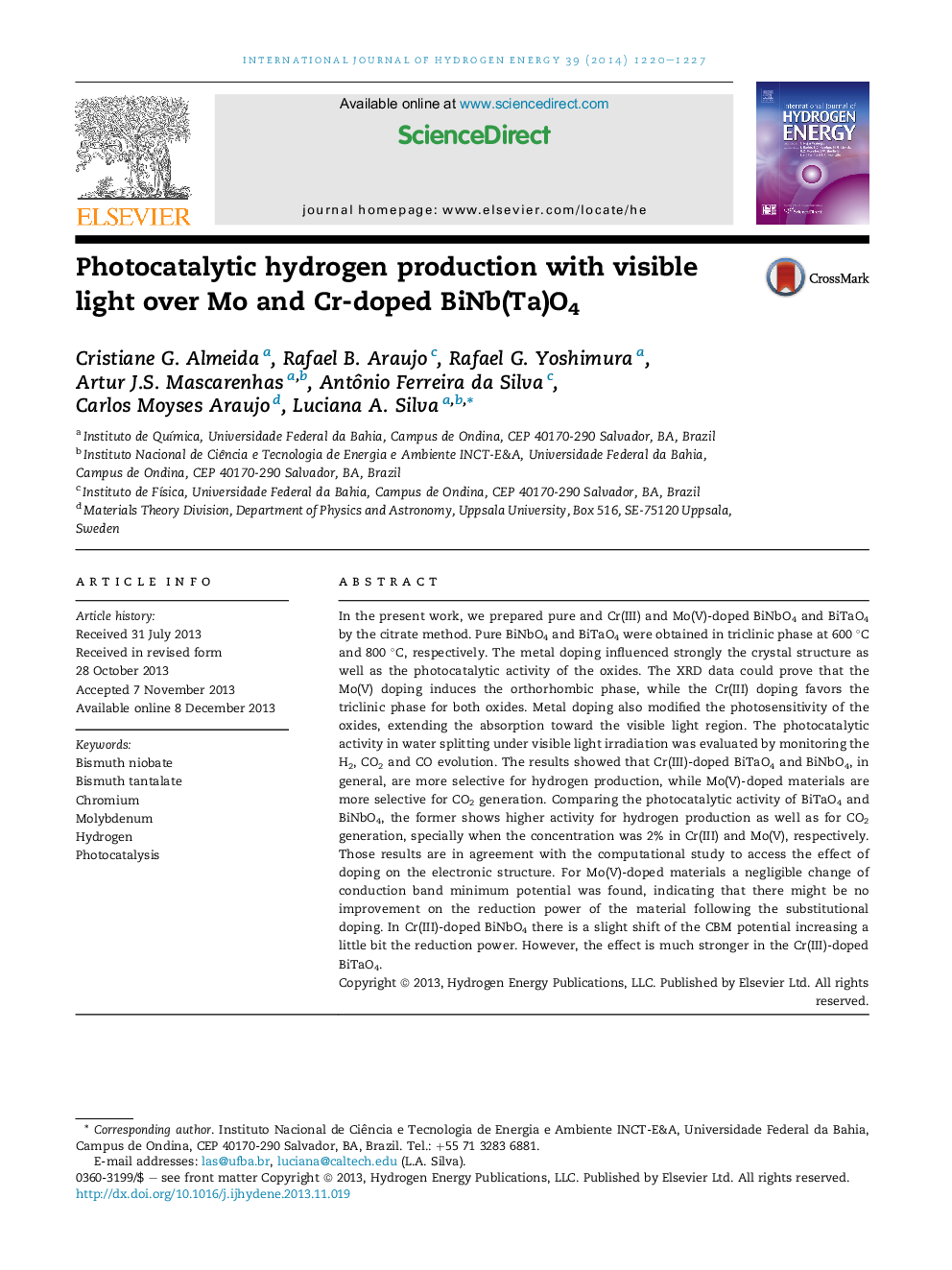| Article ID | Journal | Published Year | Pages | File Type |
|---|---|---|---|---|
| 7720748 | International Journal of Hydrogen Energy | 2014 | 8 Pages |
Abstract
In the present work, we prepared pure and Cr(III) and Mo(V)-doped BiNbO4 and BiTaO4 by the citrate method. Pure BiNbO4 and BiTaO4 were obtained in triclinic phase at 600 °C and 800 °C, respectively. The metal doping influenced strongly the crystal structure as well as the photocatalytic activity of the oxides. The XRD data could prove that the Mo(V) doping induces the orthorhombic phase, while the Cr(III) doping favors the triclinic phase for both oxides. Metal doping also modified the photosensitivity of the oxides, extending the absorption toward the visible light region. The photocatalytic activity in water splitting under visible light irradiation was evaluated by monitoring the H2, CO2 and CO evolution. The results showed that Cr(III)-doped BiTaO4 and BiNbO4, in general, are more selective for hydrogen production, while Mo(V)-doped materials are more selective for CO2 generation. Comparing the photocatalytic activity of BiTaO4 and BiNbO4, the former shows higher activity for hydrogen production as well as for CO2 generation, specially when the concentration was 2% in Cr(III) and Mo(V), respectively. Those results are in agreement with the computational study to access the effect of doping on the electronic structure. For Mo(V)-doped materials a negligible change of conduction band minimum potential was found, indicating that there might be no improvement on the reduction power of the material following the substitutional doping. In Cr(III)-doped BiNbO4 there is a slight shift of the CBM potential increasing a little bit the reduction power. However, the effect is much stronger in the Cr(III)-doped BiTaO4.
Related Topics
Physical Sciences and Engineering
Chemistry
Electrochemistry
Authors
Cristiane G. Almeida, Rafael B. Araujo, Rafael G. Yoshimura, Artur J.S. Mascarenhas, Antônio Ferreira da Silva, Carlos Moyses Araujo, Luciana A. Silva,
